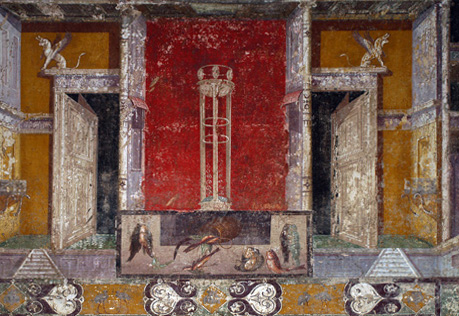 1
1The stylistic ambiguity that accompanies the 'Intricate' Fourth Style is in part due to the substantial renovation and innovation opportunities that followed after the 62 AD earthquake.
“Between that year (62AD) and 79, more walls were freshly decorated, probably, than in any previous period of equal length in the history of the city. For this reason, examples of decoration in the Intricate Style are much more numerous than might have been expected from the length of time that it was in vogue ; they give the prevailing cast to the remains of painting in the ruins, and this style is ordinarily thought of when Pompeian wall decoration is referred to.” (August Mau, 1899: 460)
Another plausible reading is that any composition not easily defined as the First, Second or Third Style was subsequently designated as the Fourth, and hence it appears to be so numerous. Its lack of any stylistic coherence tends to support this view, thus making the post-earthquake paintings not so much a 'style' but a pluralistic amalgamation of all the previous styles.
Mau’s typological study of the wall-paintings found at Pompeii and Herculaneum emphasised stylistic differences between the ‘Four’ Styles. And, as has already been mentioned, further studies based on his theories attempted to define intermediary or transitional phases within each style. A less generous critic might say that the identification of early and late phases within each style was simply a way of reconciling the fact that many wall-paintings that are designated as Third or Fourth Style are indistinguishable and, conversely, wall-paintings such as the one found in the tablinum of Casa di M. Lucretius Fronto, a much quoted example of the Third Style, have more Fourth and Second Style characteristics than many so called Fourth or Second Style paintings (fig.1-2).
 1
1
|